21 Mar BP settlement, milestone for some victims, a setback for others
By JOHN SCHWARTZ
Denise Spivacke Haralson and her husband, Larry, figured that they almost had their money. They had settled Mr. Haralson’s claims against BP for the losses he suffered as a construction worker in the economic slump after the 2010 Gulf of Mexico oil spill.
Related
With the settlement papers signed in November, they had been dealing with last bits of paperwork and had been waiting for a $14,600 check. Mr. Haralson had planned to get away from the sluggish construction market in Ocean Springs, Miss., and head up to booming North Dakota. But they needed the settlement money to get him there.
That is when BP and the core group of plaintiffs in the case announced that they had reached an uncapped settlement that BP estimates at $7.8 billion for individuals and businesses suing the company. The settlement involved shutting down the claims center that BP had set up at the request of the Obama administration, and which had handed out more than $6 billion so far.
Under the agreement, it is being replaced by another center that will be run under the court’s supervision, with new rules that plaintiffs’ lawyers argued would probably give plaintiffs more money than the old Gulf Coast Claims Facility. However, the Haralsons will not be getting the money right away. Under the new deal, once the new center is up and running, anyone with a settlement offer will get 60 percent of the original offer, and then the 40 percent will be judged under the new rules.
No one, the lawyers have emphasized, would have to accept less than the original offer, but that is little satisfaction for Ms. Haralson. “Now they tell us we have to wait again?” she said, fuming. “We feel they’ve broken our contract.”
The proposed settlement between BP and individual and business plaintiffs over the spill has not even been fleshed out yet, but there are already lawyers and clients complaining that they have been inconvenienced or cut out. People like Ms. Haralson are upset that they have to wait on deals they had already closed. And some groups of plaintiffs have found themselves excluded entirely. The complaints suggest that the path to settlement promises to be a rocky one for many who say they were made victims twice: first by the spill, and then by a baffling legal process.
Mr. Haralson is one of thousands of people represented by the Mississippi Center for Justice, which received money from the Gulf Coast Claims Facility to help guide people through the process without charge. The group’s financing runs out in June, said John Jopling, managing attorney in its Biloxi office. With the new settlement, lawyers are scouting the gulf region to sign up clients. But, he asked, “Where is the resource that will allow them to get a free lawyer to help with the process?”
Richard Drummond, another client of the Mississippi organization, said he was ready for a change, however, having found dealing with the Gulf Coast Claims Facility a “very frustrating, very disappointing process.” Compared with that, he said, “I think anything could be an improvement.”
Among the groups not included in the proposed settlement are those suing BP over the deaths and injuries caused by the explosion on the Deepwater Horizon drilling rig. The deal is structured as a class action, and those cases have unique features that make it impossible to include them within a class, BP and the plaintiffs’ group agreed. Lawyers for those families have long tried to get their cases detached from the complex tangle of federal litigation and transferred to state courts, or to settle them. Steven J. Gordon, who has at least three cases whose status is unclear, said, “We’re in limbo.”
Ernest Cannon, a Texas lawyer, represents the widow of a rig worker who settled with the previous fund, administered by Kenneth R. Feinberg, but has not received payment. Mr. Cannon said he had received little guidance about what to do until Wednesday, when Judge Carl J. Barbier of Federal District Court in New Orleans issued a terse order saying that “although it should not be necessary to state the obvious,” his order recognizing the settlement proposal should not prevent other settlements with the oil company. An e-mail to lawyers from Stephen J. Herman, a leader of the plaintiffs’ group, noted that BP had agreed to honor any “valid current existing offer.”
The brief order left Mr. Cannon unsatisfied, he said. “While it may be obvious to some, it will only be obvious to me when I see BP issue a check,” he said.
Another group that has no place in the settlement is made up of people who say they suffered economic losses caused by the temporary gulf drilling moratorium imposed by the Obama administration. BP opposed the inclusion of these cases in the settlement, saying the moratorium was not directly caused by the spill; those claims, which were also excluded from consideration by the Gulf Coast Claims Facility, will now have to go to court.
“It is time for BP to pay these companies or it is time for the court to let me try my cases,” said Gladstone N. Jones III, a New Orleans lawyer representing many businesses that suffered a financial sting from the moratorium.
Edward F. Sherman, a former dean of Tulane Law School, said that the new criteria for settlement should put more money in the pockets of claimants than the methodology employed by the Feinberg fund, and that the fact that the settlement includes long-term health care monitoring for those on the Gulf Coast spreads the benefit broadly. There will always be people unhappy with any settlement, he said, but “I think, by and large, it’s an agreement that’s favorable to a lot more people.”


